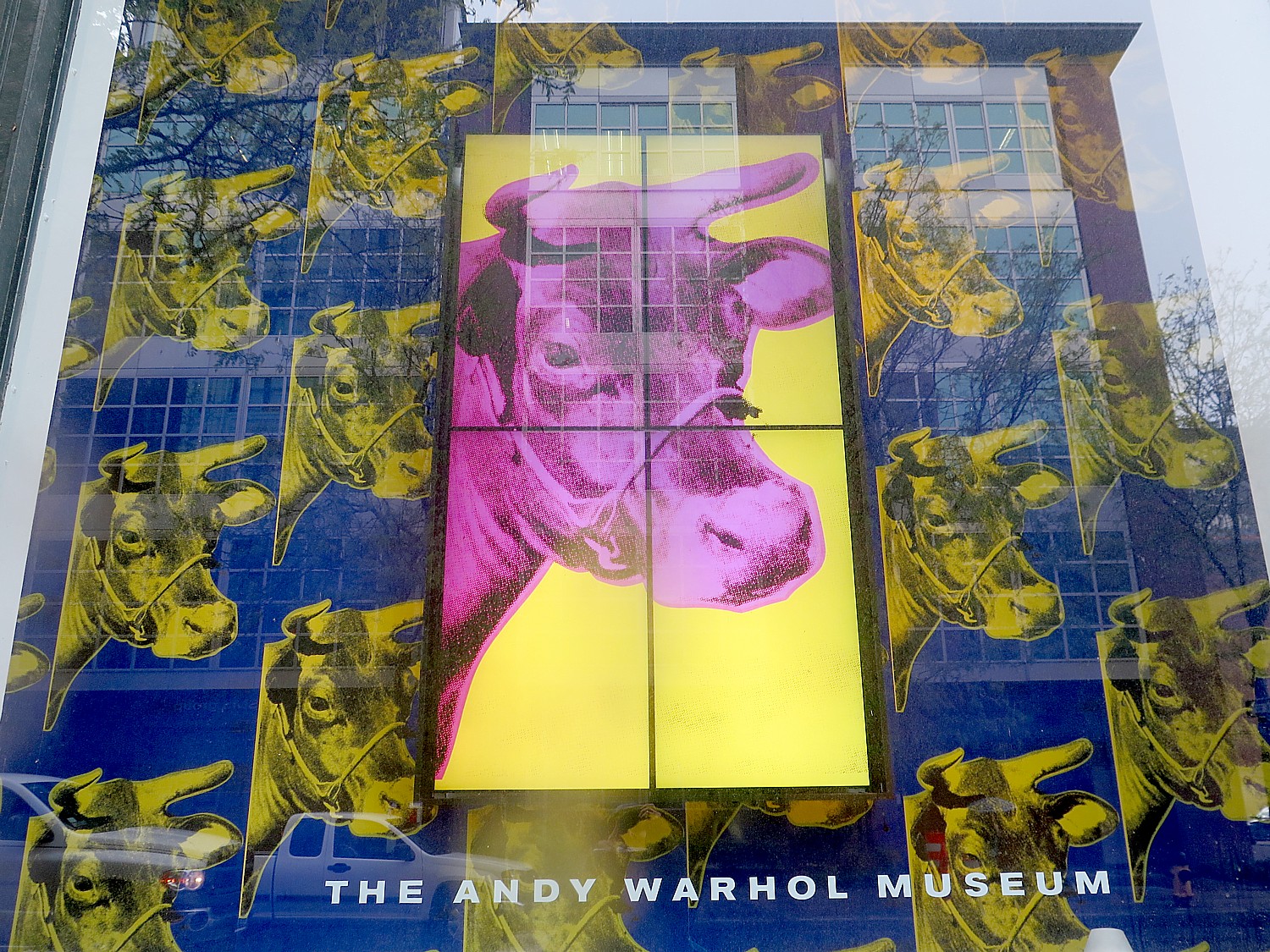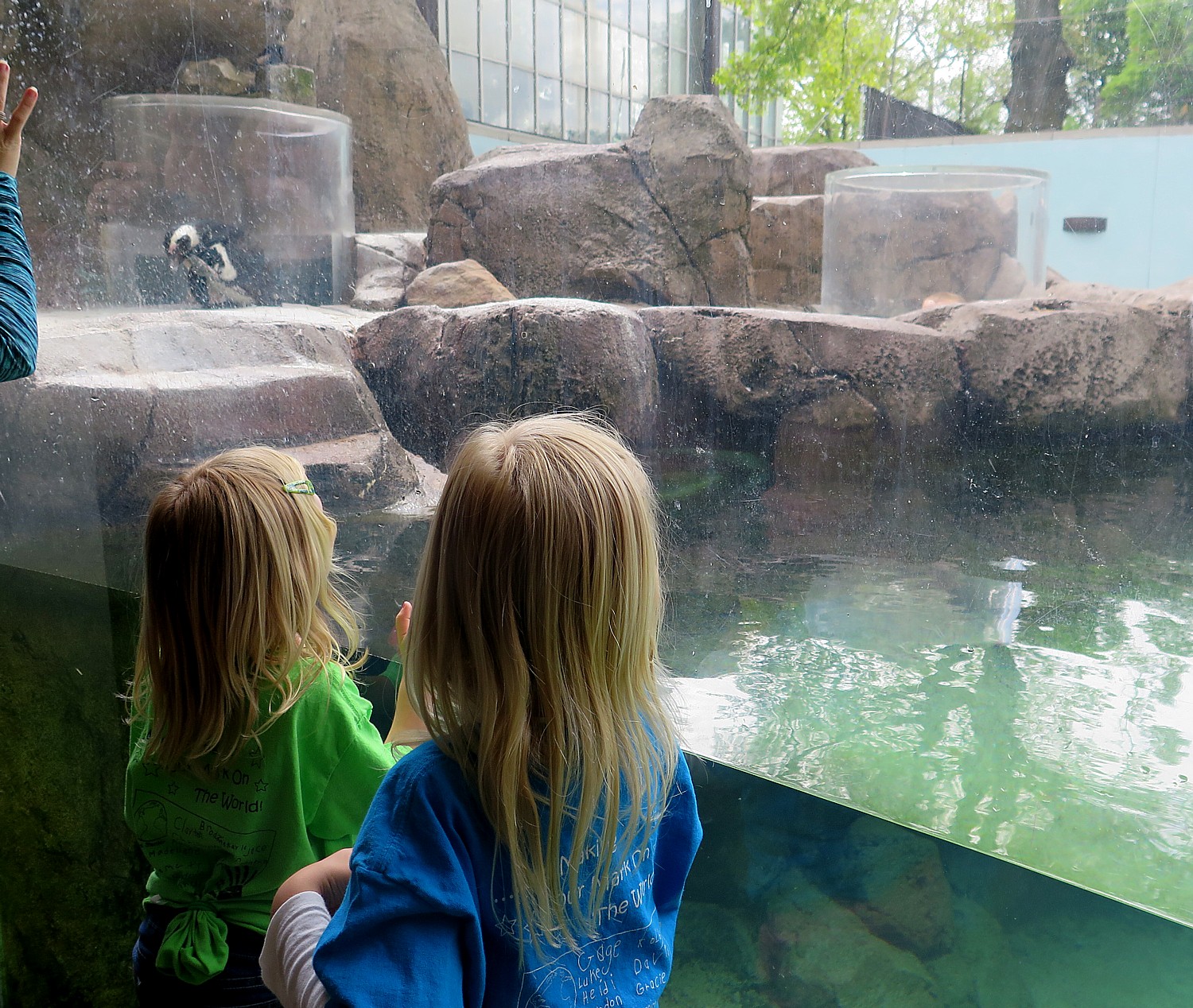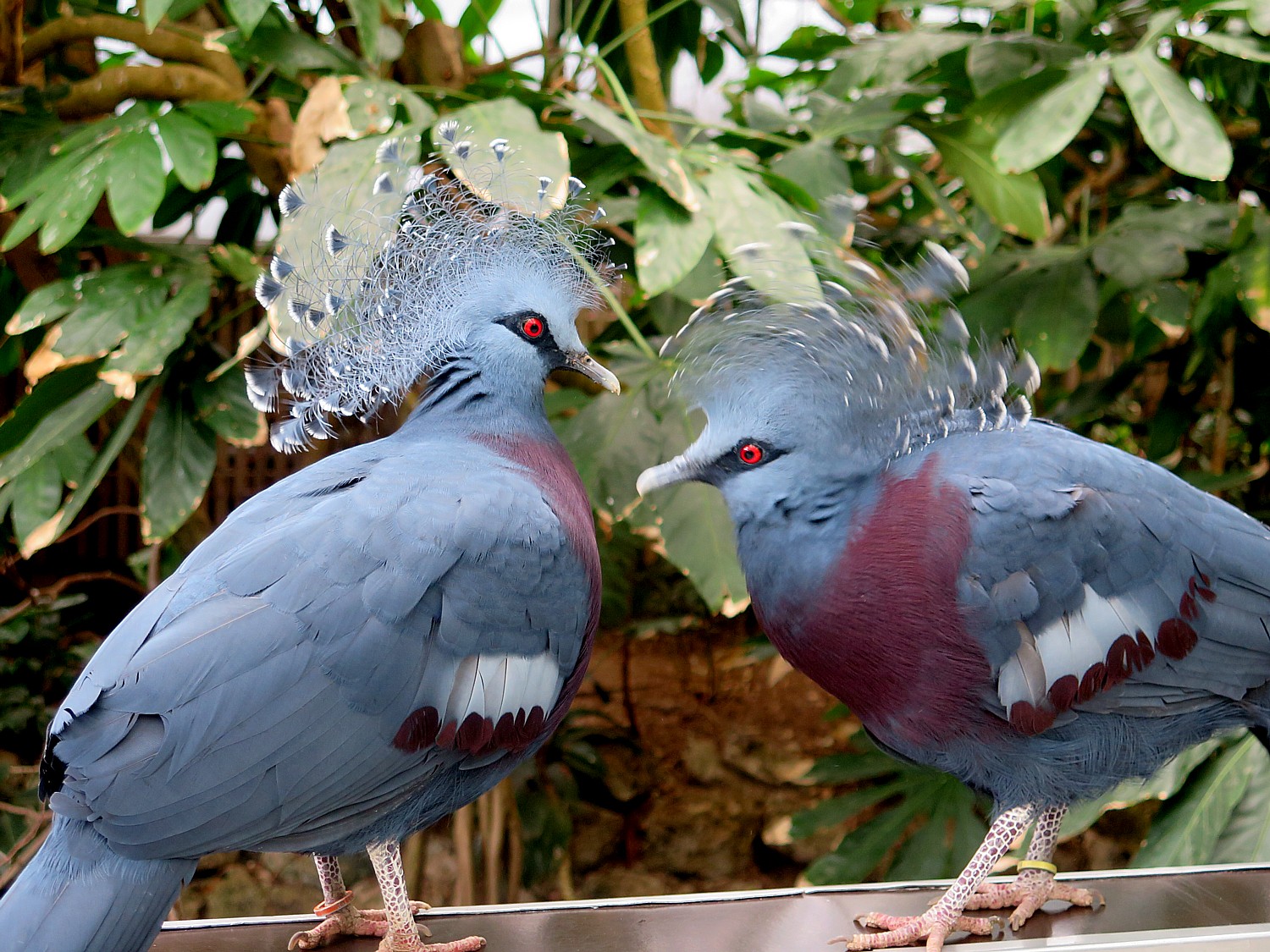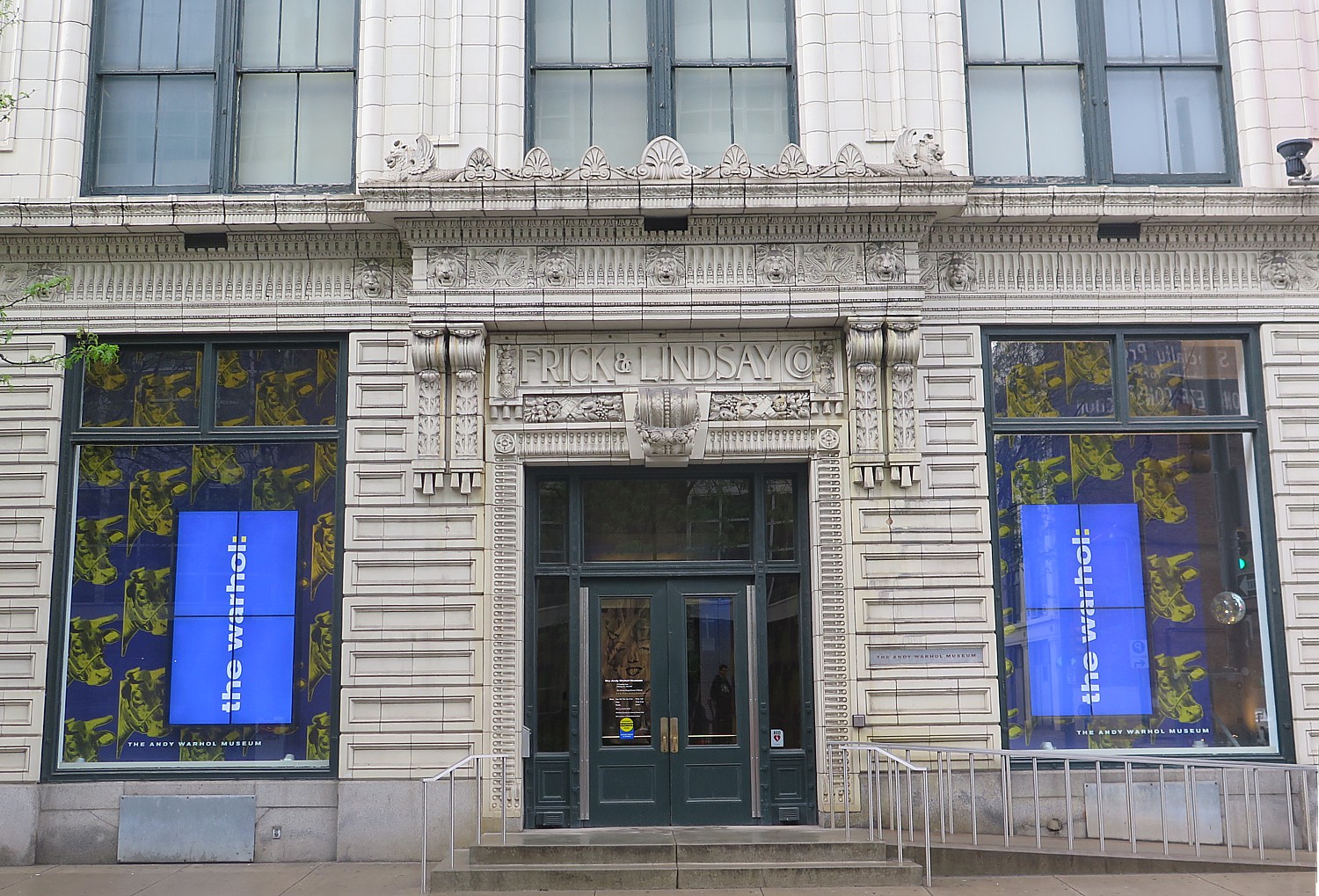
By Karen Rubin, Travel Features Syndicate, goingplacesfarandnear.com
I have come to Pittsburgh for the three-day, 120-mile Rails-to-Trails Conservancy’s Spring Sojourn on the Great Allegheny Passage, and used it as an opportunity to explore Pittsburgh, a city that once was known for steel mills, but which now has won accolades as “America’s most livable city.”
I am fascinated to see how it made such a transition from grey to green.
With only one full day to explore, I specifically seek out attractions that define Pittsburgh, all walkable within the downtown, getting advice from the Omni William Penn Hotel concierge.
I start on its two remaining funiculars, going up the Monongahela Incline and down the Duquesne Incline, dating from the 1870s, and stroll Grandview Avenue that links the two, and continue on to Point State Park and the Fort Pitt Museum. (This is third in a series)
The National Aviary
I continue my walk from the Fort Pitt Museum, over the Fort Duquesne Bridge toward the National Aviary (it was the “national” that got my attention), fascinated how city planners managed to turn a city designed for industry and machines into one that can be so walkable and bikeable.

The National Aviary, America’s only independent indoor nonprofit zoo dedicated to birds, offers a lovely exhibit of birds, including being able to walk through massive habitat-style exhibits, where the birds – like the Victoria Crowned Pigeon (amazing headdress), Golden Breasted Starling (nesting) fly freely about you, often landing very close by.

There is also a bat exhibit (you can watch bat feeding), poke your head up into the penguin pen, As I walk about, I am surprised to read a marker that states this was the site of the Western Penitentiary (1826-1880) and held confederate prisoners here 1863-64.
The National Aviary (www.aviary.org), which was designated “national” by President Clinton, would certainly be a highlight for family travelers and am having such an amazing time taking pictures, seeing some birds that I had never seen before in such close proximity without cages, I lose all sense of time (which is why I didn’t have enough time to visit the Heinz History Center).

The Warhol Museum
The National Aviary is also just a short walk to my next stop: the Warhol Museum. I had not realized that Andy Warhol was a native son of Pittsburgh (born to a Slovakian family of modest means, he attended Carnegie Mellon which was Carnegie Technical at the time) – this museum is in the tradition of the Dali Museum in St. Petersburg, totally extolling the life of one artist. It basically continues what Andy Warhol did most successfully his whole life: market his art to inflate prices. The best part, for me, was learning more about his biography – what made him “tick”, his creative process and about his techniques.

My own belief is that Warhol was more of a marketing genius than an artistic one (at least Salvador Dali was both a marketing genius and an artistic one), but I am willing to be convinced otherwise as I roam the museum.
Indeed, as a placard notes, since the seven-story museum opened in 1994, there has been a steady increasing level of recognition of Warhol’s “singular contribution to 20th century art and his extraordinary influence on contemporary art internationally. The museum is on the forefront of research into Warhol’s work.”
There is a timeline along the massive walls that document in excruciating detail Warhol’s life and learn such tidbits as: Andrew Warhola was born in 1928 to immigrants from Mikona in Slovakia; he graduated Carnegie Tech (which became Carnegie Mellon); in 1956 he met Edmond Walloaitch who used photography in his own works; most of Warhol’s early endeavors were self-published; he was inspired by popular culture and enlarged images from magazines and photographs with a projector, then painted the projection on canvas; he used a rubber stamp, then the silk screen process; the first silkscreen painting based on a photograph was a baseball, in 1962; he “replicated the look of commercial advertising, giving Warhol faithful duplication of his appropriated source image, while also allowing him to experiment with over-painting, off-register and endless chance combinations”.
After graduating Carnegie Tech, he took a “risk” and came to New York City where he got his big break, illustrating a story “What is Success” for Glamour Magazine. “He became one of the most successful commercial illustrators.” A particularly noteworthy item on the timeline: 1972- after publication of his “Vote McGovern,” the IRS audited Warhol annually until his death.” Warhol died in 1987, at the age of 58.
He created the “blotted line technique” – where he could trace or copy and an image “appropriating images from popular culture” – and reproduce any number of them, factory-style.
Warhol, we learn, made a fortune from portraits, once again, getting a giant commercial boost after an exhibit at the Whitney in 1979, curated by his close friend David Whitney consisting of 56 double portraits of artists, fashion designers, collectors, art dealers, which showcased an aspect of his painting “that he characterized as ‘business art’.”
After the 1979 show, his private portraits business hit heights- early 80s – he produced did 50 a year at $40K for 2-panel, or $2 million in annual profits.
“He was unapologetic in his imposition of lucrative business model as part of his art practice.”
I notice a prominently displayed portrait of Prince from 1984, which is up just after the musician’s death.
Andy Warhol was known for his passion as a collector – very possibly an outgrowth of his impoverished childhood and his expropriation of others’ art and design. Over his lifetime, he collected some 500,000 artifacts. There is an immense room, called the “Vault” that is filled with “time capsules” – 610 flimsy cartons, each with 500 objects.
I found it totally ironic, though, that you are not allowed to take any photos since Warhol’s art was based on expropriating the images and designs created by others (ie. Campbell Soup Can, Marilyn Monroe photo). You can take part in workshops to learn the silkscreening techniques he used. The museum is a must-see for anyone who is a fan.
The Andy Warhol Museum was created by the Andy Warhol Foundation, Dia Center for the Arts, and the Carnegie Foundation which operates the museum. It is one of four Carnegie Museums of Pittsburgh (Carnegie Museum of Art, Carnegie Museum of National History and Carnegie Science Center are the others, www.carnegiemuseums.org).
The Andy Warhol Museum, 117 Sandusky Street, Pittsburgh, PA 15212, 412-237-8300, www.warhol.org ($20/adults, $10/students and children 3-18, half price on Fridays, 5-10 pm; closed Mondays).
For more information, contact Visit Pittsburgh, 412-281-7711, 800-359-0758, 877-LOVE PGH (568-3744), info@visitpittsburgh.com, www.visitpittsburgh.com.
Next: Pittsburgh Walking Tour Continues to Strip District
See also:
One Day, Two Nights in Pittsburgh: From Grey to Green, A Proud City Revitalized
36 Hours in Pittsburgh: Point State Park Proves Highlight of Walking Tour
____________________
© 2016 Travel Features Syndicate, a division of Workstyles, Inc. All rights reserved. Visit goingplacesfarandnear.com and travelwritersmagazine.com/TravelFeaturesSyndicate/. Blogging at goingplacesnearandfar.wordpress.com and moralcompasstravel.info. Send comments or questions to FamTravLtr@aol.com. Tweet @TravelFeatures. ‘Like’ us at facebook.com/NewsPhotoFeatures
